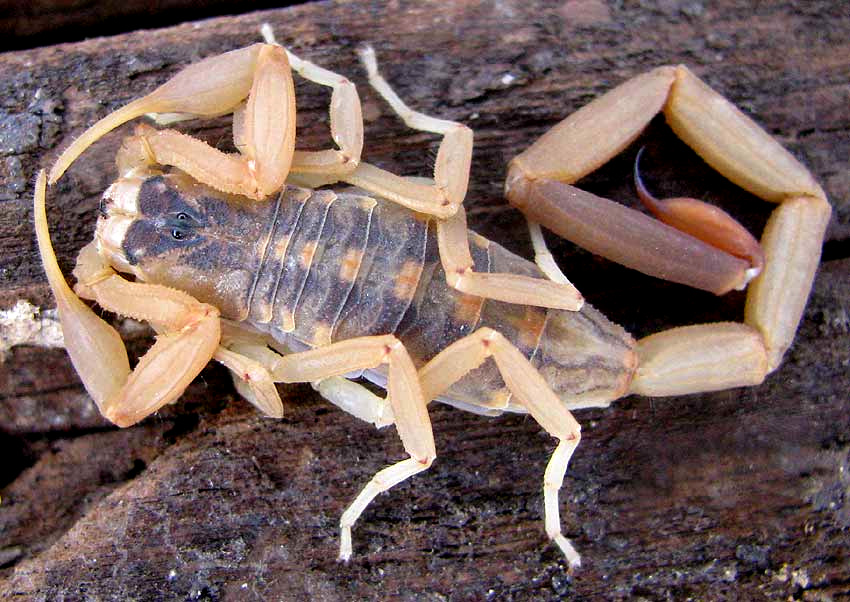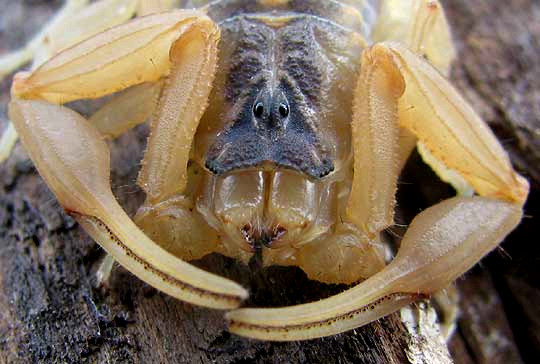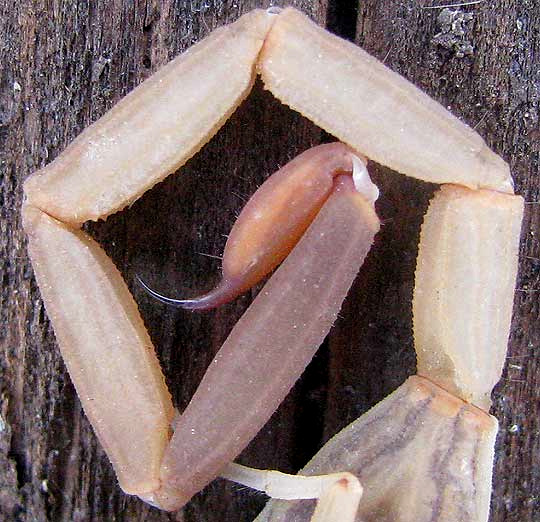Excerpts from Jim Conrad's
Naturalist Newsletter

from the September 2, 2012 Issued from the valley of the Dry Frio River in northern Uvalde County, southwestern Texas, on the southern border of the Edwards Plateau; elevation ~1750m (~5750 ft); N29.62°, W99.86°; USA
SCORPION BENEATH A FENCEPOST
Around here if something lies on the ground and you need to pick it up, you need to very gingerly flip or roll the object over to see who is beneath it before you poke your fingers there. A fairly common occurrence beneath such objects is what's shown above.
That's the Striped Bark Scorpion, CENTRUROIDES VITTATUS, described as the most common scorpion species in Texas and the most frequently encountered in the US, where it's found in south-central states, as well as much of arid northern Mexico. Our individual was about two inches long (55mm) and kept his tail flush with the fencepost he was clinging to. Notice the pair of eyes atop the head area. Below you can see what it'd look like if you were a bug being approached by this fellow:

Besides the two eyes atop the head, which are called median eyes, scorpions usually have two to five pairs of eyes along the front corners of the head. In our picture you can see six more eyes, three on the outer rims of both of the squared, forward projections of the dark head-plate. Those six eyes are called lateral eyes. Despite possessing so many eyes, scorpions don't see well, mostly relying on their sense of touch. They do have a well-developed sense of hearing, though.
The two toothlike items with hairs and black items at their bottoms are chelicerae, which are basically jaws used to grab and crush prey. You can see the stinger, or "aculeus," below:

Striped Bark Scorpions are nocturnal and eat small invertebrates -- insects, spiders, earthworms and the like. They are an adaptable species, which accounts for their large distribution area and commonness.